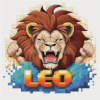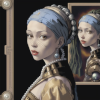
Stanley Park’s First Nations Totem Poles are one of Vancouver's most famous landmarks and attract visitors from all over. The park itself is a masterpiece of urban natural protection spanning a large swath of the coastal environment around the city. These totems are located on a part of the park called Brockton Point.


First Nations' people used to be called Indians, but the term has gone out of fashion
INDIAN TOTEM POLES
The totem was the British Columbia Indian’s coat of arms. Totem poles are unique to the northwest coast of BC and lower Alaska. They were carved from western red cedar and each carving tell of a real or mythical event. They were not idols, nor were they worshiped. Each carving on each pole has meaning. The eagle represents the kingdom of the air. The whale the lordship of the sea. The wolf the genius of the land. And the frog, the transitional link between land and sea.
I’ve never had great success photographing these poles, mainly because of inexperience with bright light conditions, but I decided to try one more time. This time, nature was on my side, dressed in her autumn best.

The info-graphics are difficult to read because of the light, so I partially transcribed some of these panels.
Ga'akstalas, carved by Wayne Alfred and Beau Dick in 1991, is based on a design by Russell Smith. The pole depicts many important figures Kwakwaka'wakw culture. Red-Cedar bark man is an ancestor who survived the great flood and gave the people the first canoe. The hero Swidi, shown riding a killer whale, was taken under the sea-world's chief and brough back the right to use all of the sea-kingdom masks. The giantess dzunukwa sits at the base of the pole, symbolizing her central role in bringing magic and wealth to her people.

Ga'akstalas, first pole from the left
The original totems in this park began to be collected in the 1920s, and some of them were carved as far back as the 1880’s. Because they’re made of wood, totems tend to deteriorate over time, so the originals were eventually replaced with carved replicas.

Chief Skedans Mortuary Pole
An older version of this pole was raised in the Haida village of Skidegate about 1870. It honours the Raven Chief of Skedans and depicts the chief's hereditary crests. The two tiny figures in the bear's ears are the chief's daughter and son-in-law who erected the pole and gave a potlatch for the chief's memorial. The recangular board at the top of the original pole covered a cavity that held the chief's remains. Haida artist Bill Reid with assistant Werner True, carved this new pole in 1964. Don Yeomans recarved the top moon face in 1998.

It's wonderful to study these totems from different angles. It's not possible to get too close, however, so one has to observe from a distance.


Sky chief pole, third from the left
The image for this infographic panel did not turn out well, so I transcribed a portion as follows:
Sky chief pole panel states that Hesquiat artist Tim Paul and Ditidaht artist Art Thompson carved this pole in 1988 to represent important characters in Nuu-chah-nulth history.

Chief Wakas pole, third from the left
In Kwakwaka'wakw (Kwakiutl) ceremonies, carved staffs called talking sticks are held by people making important speeches on behalf of a chief. This pole represents the talking stick and characters in an Owikeno story belonging to Chief Wakas. The original pole was raised in front of Chief Wakas' house in Alert Bay in the 1890s. The raven's beak opened to form a ceremonial entrance to the house, while the raven's body was painted on the house front. Nimpkish artist Doug Cranmer, who has inherited Chief Wakas' crests, carved this new pole in 1987.


Oscar Maltipi pole, tall one
First Nations origin stories tell of the animals and supernatural beings who helped found family lineages. These stories are celebrated in songs, dances, and totem pole carvings. Kwakwaka'wakw artist Oscar Maltipi carved this pole in 1968. Originally from Turnour Islan, Maltipi trained at the Royal B.C. Museum under artist and teacher Henry Hunt.


Beaver crest pole
Partial transcript:
"Once five brothers went to hunt beaver skins for a feast. The youngest brother helped the young beavers escape and followed them to their lodge. He watched as they took off their beaver cloaks to reveal human forms and tell of the death and destruction of their chief. He watched their songs and dances then returned home to report what he had seen. The brother performed the dances of the beaver people at a feast and raised a pole called Big Beaver. It was at this time that the Eagle Chief met and shared the skies with the Raven, which is another story."

I hope you enjoyed the tour of these fascinating creations by the First Nations of British Columbia. Thank you for visiting.




How beautiful what you bring us today, so much history in a natural setting, the culture they had before and those totems with those spectacular colours in the middle of the trees. I love it, there is always so much to see and learn. Thank you!
The various first nations have different beliefs and practices, so there's a great variety of symbolism and imagery that they use in totems. It seems that people used to think that the totems had mainly religious significance, but we now know they have other social and cultural purposes as well.
Totems are extremely important, not only in a strictly religious sense but also in relation to the soul. It's brilliant!
!discovery shots
!PIZZA
This post was shared and voted inside the discord by the curators team of Discovery-it in collaboration with Visual Shots community.
Discovery-it is also a Witness, vote for us here
Delegate to us for passive income. Check our 80% fee-back Program
$PIZZA slices delivered:
@jlinaresp(7/15) tipped @litguru
Come get MOONed!